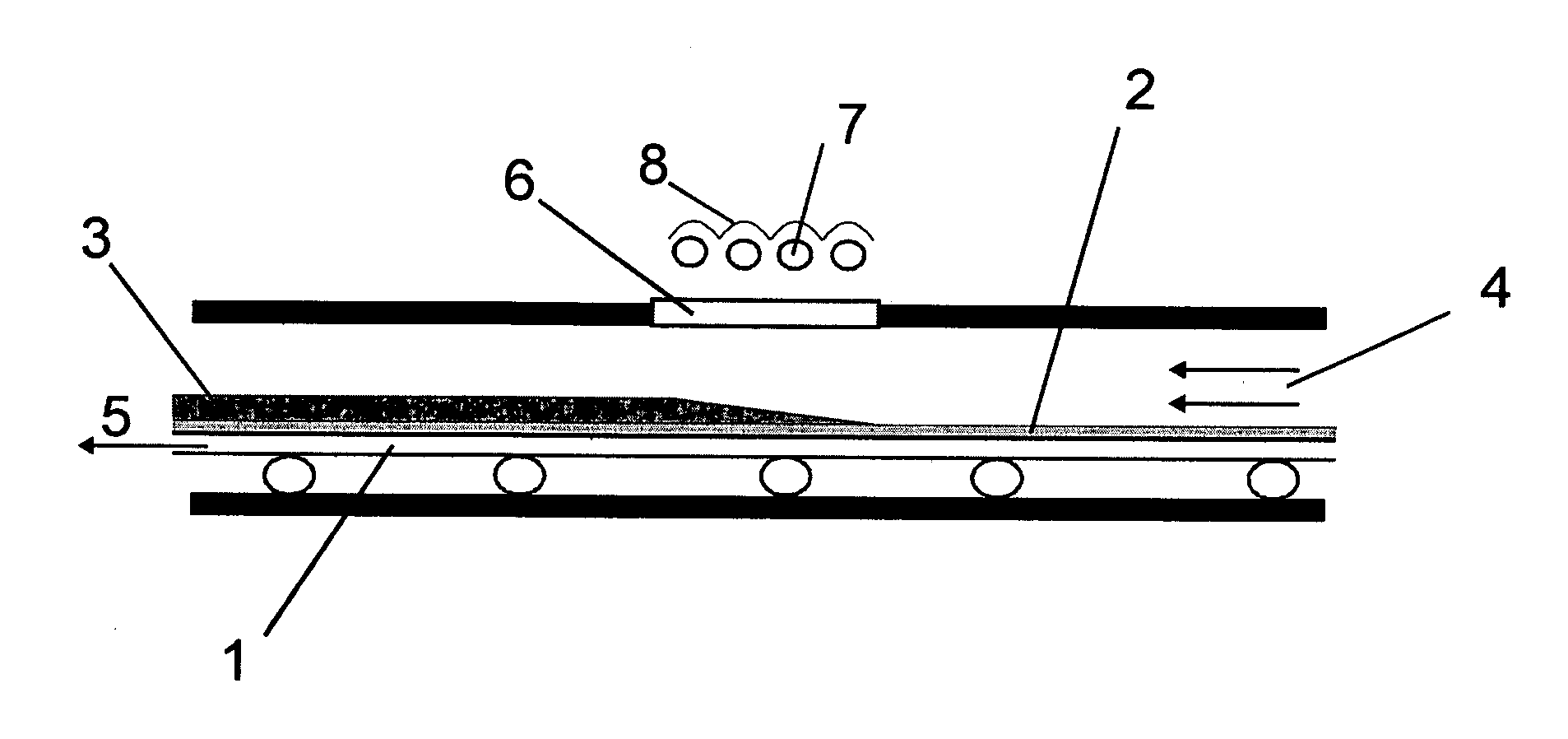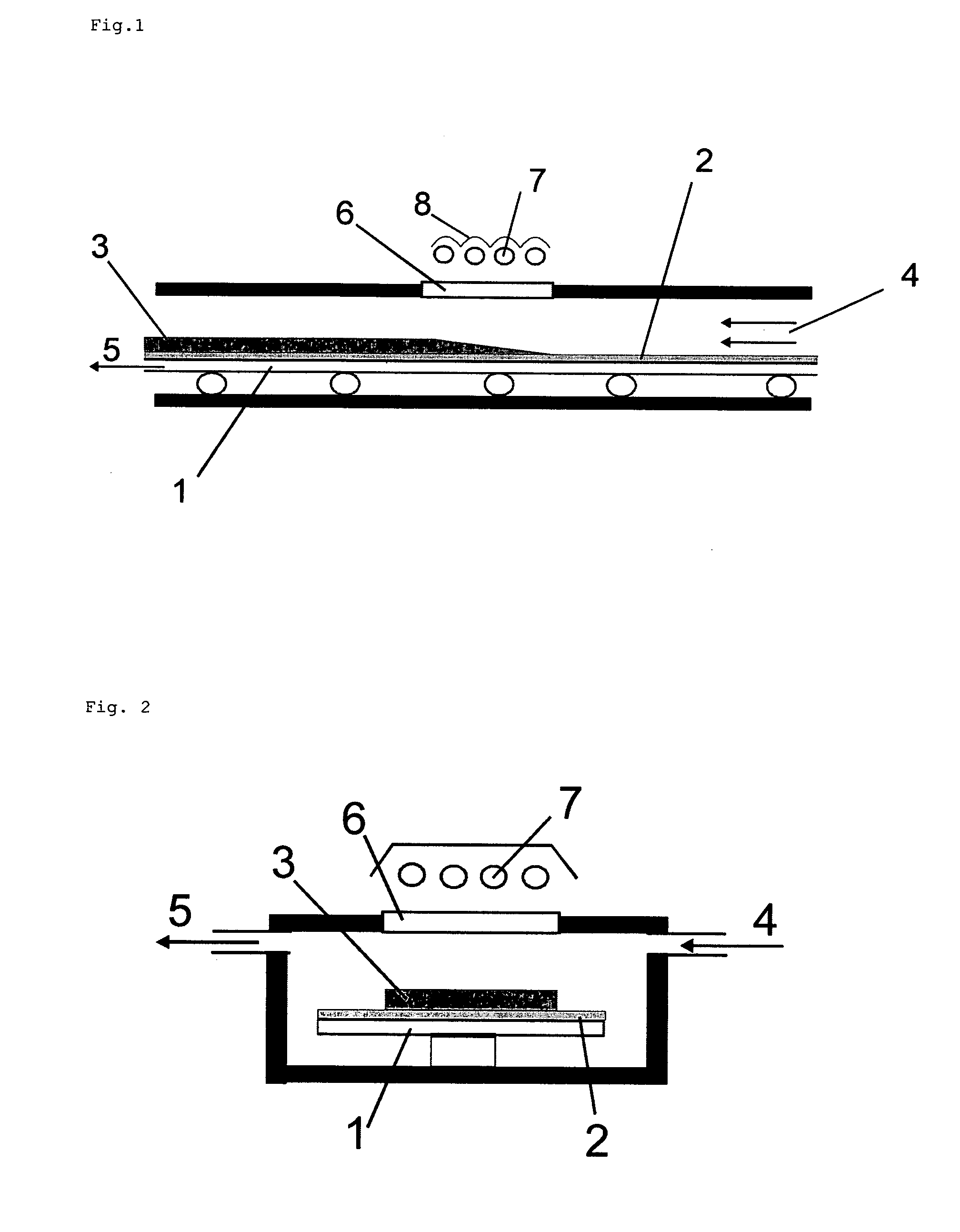Method for the production of semiconductor ribbons from a gaseous feedstock
- Summary
- Abstract
- Description
- Claims
- Application Information
AI Technical Summary
Benefits of technology
Problems solved by technology
Method used
Image
Examples
Embodiment Construction
[0042]The apparatus consists of a series of stages, corresponding to steps in the process. In the first stage, the gaseous feedstock, silane in hydrogen, is used to produce a fine powder of semiconductor material (silicon) by thermal decomposition in the gas phase. This semiconductor powder is uniformly spread and subsequently compressed and flattened, over a substrate constituted by contiguous quartz plates and moving at constant speed, by means of a vibrating blade and pressing piece.
[0043]In the next stage, represented in FIG. 1, the compressed and flattened powder layer (2) over the substrate (1) is heated by radiation from halogen lamps (7) through a quartz window (6). The gaseous feedstock (4) was made to flow over the heated surface, causing deposition of solid semiconductor material (3), silicon, over the heated surface. The deposited material thickens as the motion transports it under the radiation heaters.
[0044]In the third stage, the self-supporting (silicon) ribbon is de...
PUM
| Property | Measurement | Unit |
|---|---|---|
| Temperature | aaaaa | aaaaa |
| Length | aaaaa | aaaaa |
| Fraction | aaaaa | aaaaa |
Abstract
Description
Claims
Application Information
 Login to View More
Login to View More - R&D
- Intellectual Property
- Life Sciences
- Materials
- Tech Scout
- Unparalleled Data Quality
- Higher Quality Content
- 60% Fewer Hallucinations
Browse by: Latest US Patents, China's latest patents, Technical Efficacy Thesaurus, Application Domain, Technology Topic, Popular Technical Reports.
© 2025 PatSnap. All rights reserved.Legal|Privacy policy|Modern Slavery Act Transparency Statement|Sitemap|About US| Contact US: help@patsnap.com


